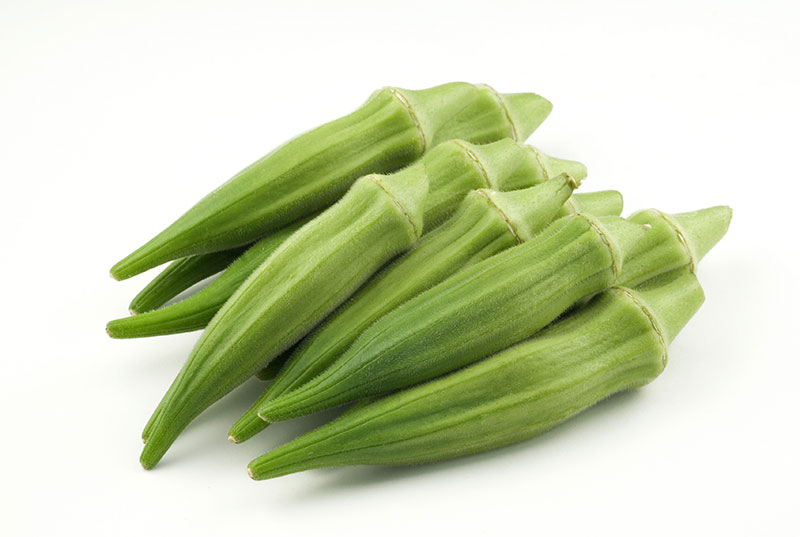Okra

Availability:
Year-round
Availability:
| J | F | M | A | M | J | J | A | S | O | N | D |
Notice:
on demand
Receiving/Storage:
Receiving Information: Yellow discoloration; tough texture; rapid decay: Indication of storage at high temperatures - maintain short-term storage temperature of 45-50 degrees F/7-10 degrees C. Display okra soon after receiving. Shriveling: Indication of exposure to low humidity - maintain humidity level of 85-95%. Yellowing; loss of green color: Indication of ethylene exposure - keep okra away from ethylene-producing produce and ripening rooms. Black discoloration: Okra is very susceptible to bruising and will turn black - keep handling to a minimum; do not drop shipping containers on the floor. Pitting; discoloration; water-soaked spots; decay: Indication of chill injury - do not store okra below 45 degrees F/7 degrees C. Storage/Handling: Optimum Temp (F):45 - 50F 7.2 - 10.0C. Optimum Humidity: 90 - 95 %. Storage Life (Days):7 - 10. Ethylene Producer: No. Ethylene Sensitive: Yes. Water Sprinkle: No. Odor Producer: No. Ripens After Harvest: No. Mist: No. Top Ice: No. Odor Sensitive: No.
Description:
A traditional food plant in Africa, this little-known vegetable has potential to improve nutrition, boost food security, foster rural development and support sustainable land care. Scientific Name: Abelmoschus esculentus


